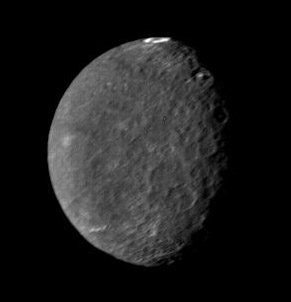Ta'ãnga:Umbriel (moon).jpg
Umbriel_(moon).jpg (291 × 302 píxeles; tamaño de archivo: 25 kB; tipo MIME: image/jpeg)
Marandurenda rembiasakue
Ejopy peteĩ ára/aravo rehe rehecha hag̃ua pe marandurenda ojehechaukaháicha upe jave.
| Ára/Aravo | Michĩháicha | Tuichakue | Puruhára | Jehaimombyky | |
|---|---|---|---|---|---|
| ko’ag̃agua | 23:08 14 jasypoapy 2005 |  | 291 × 302 (25 kB) | Vzb83~commonswiki | cropped image |
| 18:44 30 jasyrundy 2005 |  | 400 × 400 (7 kB) | Bricktop | uploaded missing image | |
| 21:18 4 jasyrundy 2005 |  | 252 × 252 (24 kB) | Smartech~commonswiki | '''Original Caption Released with Image''': The southern hemisphere of Umbriel displays heavy cratering in this Voyager 2 image, taken Jan. 24, 1986, from a distance of 557,000 kilometers (346,000 miles). This frame, |
Marandurenda jeporu
La siguiente página usa este archivo:
Marandurenda jepuru opaite tembiapópe
Ko'ã ambue wiki oipuru ko marandurenda:
- Jeporu af.wikipedia.org rehe
- Jeporu als.wikipedia.org rehe
- Jeporu ar.wikipedia.org rehe
- Jeporu ast.wikipedia.org rehe
- Jeporu az.wikipedia.org rehe
- Jeporu be-tarask.wikipedia.org rehe
- Jeporu bg.wikipedia.org rehe
- Jeporu ca.wikipedia.org rehe
- Jeporu ceb.wikipedia.org rehe
- Jeporu ckb.wikipedia.org rehe
- Jeporu cs.wikipedia.org rehe
- Jeporu cy.wikipedia.org rehe
- Jeporu da.wikipedia.org rehe
- Jeporu de.wikipedia.org rehe
- Jeporu de.wikibooks.org rehe
- Jeporu el.wikipedia.org rehe
- Jeporu en.wikipedia.org rehe
- Jeporu eo.wikipedia.org rehe
- Jeporu es.wikipedia.org rehe
- Jeporu et.wikipedia.org rehe
- Jeporu eu.wikipedia.org rehe
- Jeporu fa.wikipedia.org rehe
- Jeporu fi.wikipedia.org rehe
- Jeporu fr.wikipedia.org rehe
Ver más uso global de este archivo.



